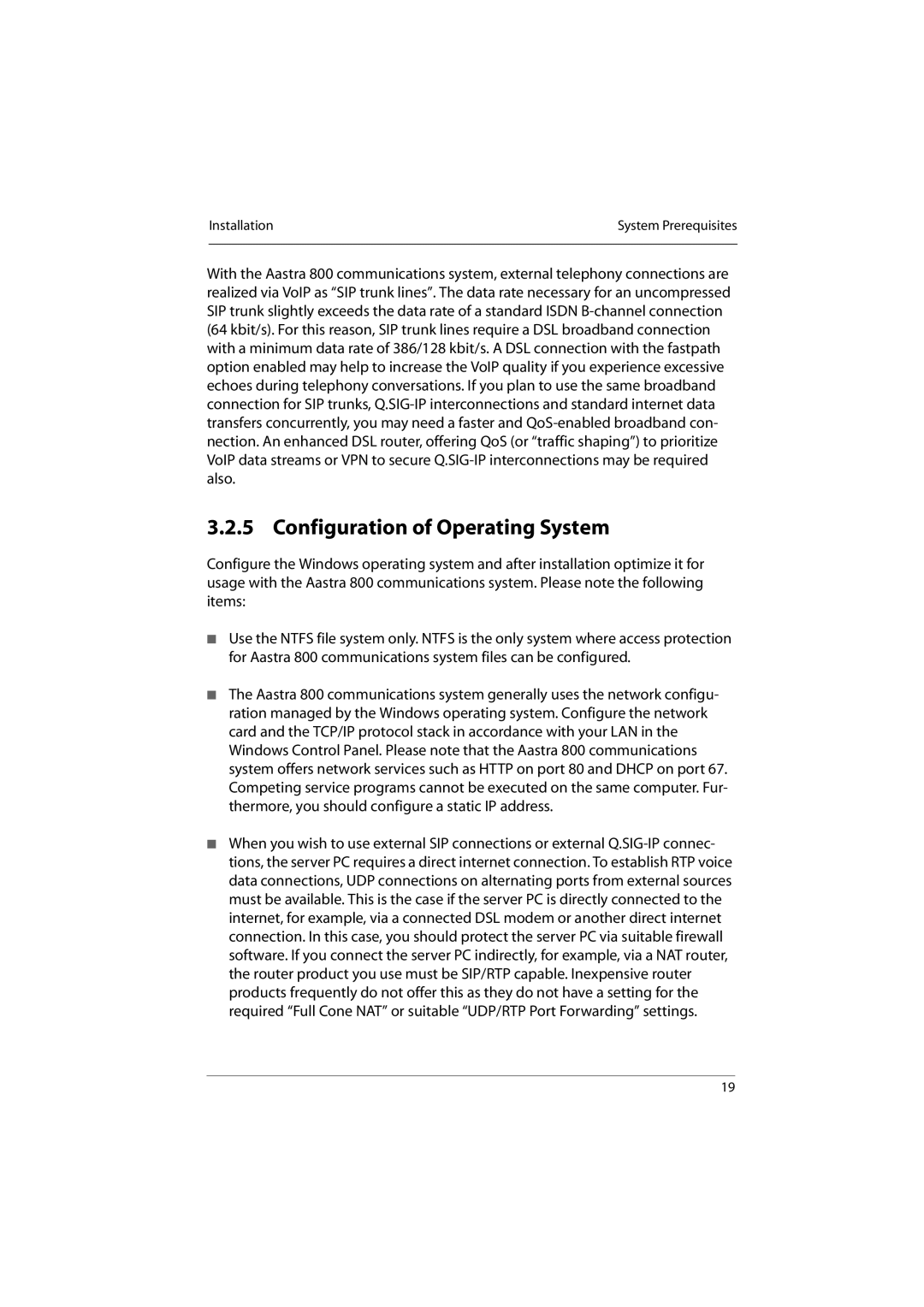
Installation | System Prerequisites |
| |
With the Aastra 800 communications system, external telephony connections are realized via VoIP as “SIP trunk lines”. The data rate necessary for an uncompressed SIP trunk slightly exceeds the data rate of a standard ISDN B-channel connection (64 kbit/s). For this reason, SIP trunk lines require a DSL broadband connection with a minimum data rate of 386/128 kbit/s. A DSL connection with the fastpath option enabled may help to increase the VoIP quality if you experience excessive echoes during telephony conversations. If you plan to use the same broadband connection for SIP trunks, Q.SIG-IP interconnections and standard internet data transfers concurrently, you may need a faster and QoS-enabled broadband con- nection. An enhanced DSL router, offering QoS (or “traffic shaping”) to prioritize VoIP data streams or VPN to secure Q.SIG-IP interconnections may be required also.
3.2.5 Configuration of Operating System
Configure the Windows operating system and after installation optimize it for usage with the Aastra 800 communications system. Please note the following items:
■Use the NTFS file system only. NTFS is the only system where access protection for Aastra 800 communications system files can be configured.
■The Aastra 800 communications system generally uses the network configu- ration managed by the Windows operating system. Configure the network card and the TCP/IP protocol stack in accordance with your LAN in the Windows Control Panel. Please note that the Aastra 800 communications system offers network services such as HTTP on port 80 and DHCP on port 67. Competing service programs cannot be executed on the same computer. Fur- thermore, you should configure a static IP address.
■When you wish to use external SIP connections or external Q.SIG-IP connec- tions, the server PC requires a direct internet connection. To establish RTP voice data connections, UDP connections on alternating ports from external sources must be available. This is the case if the server PC is directly connected to the internet, for example, via a connected DSL modem or another direct internet connection. In this case, you should protect the server PC via suitable firewall software. If you connect the server PC indirectly, for example, via a NAT router, the router product you use must be SIP/RTP capable. Inexpensive router products frequently do not offer this as they do not have a setting for the required “Full Cone NAT” or suitable “UDP/RTP Port Forwarding” settings.
